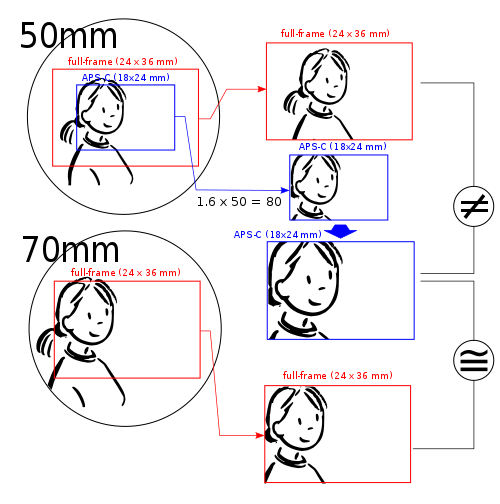Let me start by adding another name: 135 film. Back in 1934, Kodak introduced a new film format for photography and called it 135. It soon became popular, and its success has last in analog photography until now. This film is also called 35mm, which corresponds to the width of the film, perforations included. The actual size of each image is 36x24mm.
In 1996, a smaller standard for films has been revealed: Advanced Photo System (APS). APS films are all 24mm wide, but they are divided into three categories: High definition (H - 30.2x16.7mm), Classic (C - 25.1x16.7mm) and Panoramic (P - 30.2x9.5mm). Among them, only the APS-C has the same aspect ratio of 3:2 as the 35mm (full frame).
When digital photography appeared, it took inspiration in the analog photography industry, and based its sensors, the digital version of the film, on the film sizes. This is why most DSLR are equipped with an APS-C or a full frame sensor.

Digital camera sensor sizes comparison par Digital_camera_sensor_sizes_comparison.gif: ? derivative work: Bproctor (Digital_camera_sensor_sizes_comparison.gif) [CC-BY-SA-3.0 (www.creativecommons.org/licenses/by-sa/3.0)], via Wikimedia Commons
What is the consequence of the size difference when you shoot a picture? As you can see in the next picture, when you shoot with an APS-C, it behaves as if you cropped a picture taken with a full frame: it emulates a zoom effect.
That means when you have a lens with a given focal length, it will not provide the same zoom depending on the size of the sensor of the camera you use it with.
As a standard, focal length of lenses are given for full frame sensors (unless stated otherwise). You can calculate the focal length for an APS-C sensor using the crop factor, which value is CF = HeightFullFrame / HeightAPS-C = 36 / 25.1 ~ 1.43
This would be easy, if the manufacturers hadn't decided to make their own "APS-C" size... For example, Canon's APS-C sensor is 22.2x14.8mm, the crop factor is ~1.62. A 50mm lens set on a Canon APS-C camera is equivalent to a 80mm set on a full frame camera.

Full frame vs APS-C par Rama (Own work) [CC-BY-SA-2.0-fr (www.creativecommons.org/licenses/by-sa/2.0/fr/deed.en)], via Wikimedia Commons
Anyway, long story short, if you have an APS-C camera, you need to know that lenses will provide a higher zoom than expected. It is often said 50mm are great for portrait, that means if you have an APS-C you should get a 35mm!
version française

No comments:
Post a Comment